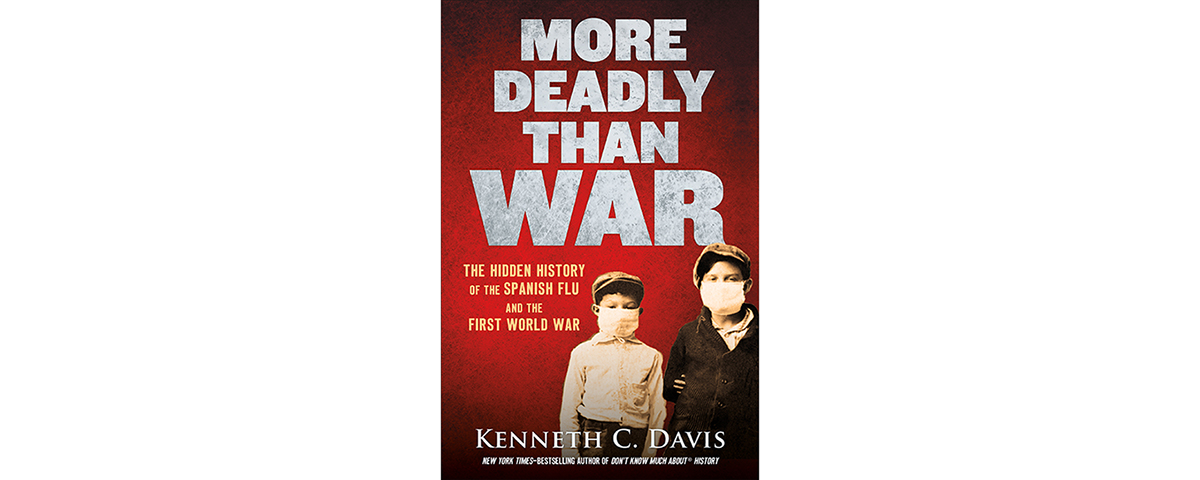More Deadly Than War: The Hidden History of the Spanish Flu and the First World War, by Kenneth C. Davis, Henry Holt & Co., New York, 2018, $19.99
World War I is often described as the first modern war, and historians have documented it ad nauseam. Markedly less well known, however, is the pandemic that swept the globe at war’s end and afterward—the Spanish flu, generally considered the second deadliest pandemic in world history after the Black Death. More Deadly Than War is the story of that pandemic and how it affected and was affected by the war.
Davis opens his narrative at the Brevig Mission, a tiny rural settlement in northwestern Alaska, relating its devastating ordeal with the flu, which killed 72 of its 80 residents in just five days. While the pandemic didn’t start there, the manageable scale of its tribulation personalizes such statistics and reinforces Davis’ point that nowhere was safe. Decades later Brevig Mission took on renewed significance, as the bodies interred there, preserved so well in permafrost, yielded up clues as to the nature of the virus and just how it killed people. Toward the end of his book Davis again revisits Brevig Mission, describing the investigation performed on tissue samples from victims.
The intervening chapters provide an overview of the Spanish flu and its global spread via soldiers fighting abroad and then returning home. Davis places “patient zero” in Camp Funston, a military cantonment for U.S. Army recruits in Fort Riley, Kansas. From there he provides a rough sketch of the pandemic and its impacts on the war, interspersing the narrative with the accounts of individuals affected by the Spanish flu, including such notables as Franklin Delano Roosevelt, Walt Disney and Woodrow Wilson.
More Deadly Than War is a popular history, making for an easy read. Davis draws heavily on John M. Barry’s The Great Influenza, and one looking for a more detailed account of the Spanish flu would do well to read that book. That said, Davis accomplishes his goal—sketching, through the lives of the ordinary and extraordinary alike, the course of one of the deadliest plagues in history amid one of the deadliest wars in history.
—David Harris





